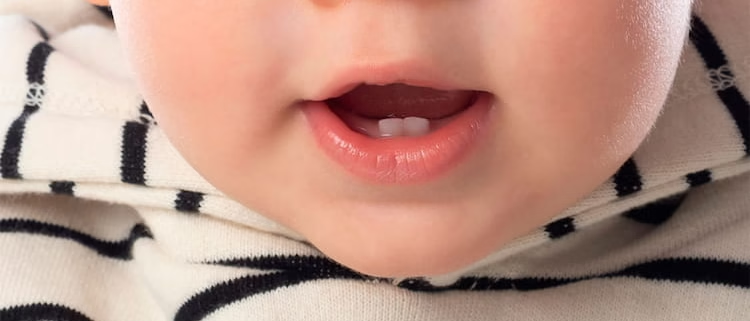
Baby teeth, also called primary teeth or deciduous teeth, are the first set of teeth that appear in infancy.
Although temporary, they play a crucial role in your child’s development — helping them eat, speak, and smile with confidence 😊
📆 When Do Baby Teeth Come In?
Most babies begin teething around 6 months, though some start earlier or later.
By age 3, your child will likely have a full set of 20 baby teeth.
🗓️ Baby Teeth Eruption Timeline:
- 6–10 months: Lower central incisors (bottom front teeth)
- 8–12 months: Upper central incisors
- 9–13 months: Upper lateral incisors
- 10–16 months: Lower lateral incisors
- 13–19 months: First molars
- 16–22 months: Canines (pointed teeth)
- 25–33 months: Second molars
💡 Why Baby Teeth Matter
Even though they fall out later, baby teeth are essential for:
✅ Chewing & Nutrition – Help your child eat a varied, healthy diet
✅ Speech Development – Aid in forming sounds and clear speech
✅ Spacing for Permanent Teeth – Hold space for adult teeth to come in properly
✅ Self-Confidence – A healthy smile boosts your child’s self-esteem 🥰
🪥 How to Care for Baby Teeth
Good habits start early! Here’s how to keep baby teeth clean and healthy:
1. Clean Gums Before Teeth Erupt
Use a soft, damp cloth to gently wipe your baby’s gums daily.
2. Start Brushing as Soon as the First Tooth Appears
- Use a soft-bristled, infant-sized toothbrush
- For under age 3: Use a smear of fluoride toothpaste (rice-grain size)
- For ages 3–6: Use a pea-sized amount
- Brush twice daily — in the morning and before bed
3. Avoid Baby Bottle Tooth Decay
- Don’t let your baby fall asleep with a bottle of milk or juice
- Encourage drinking from a cup by age 1
- Limit sugary snacks and drinks
4. First Dental Visit
Book your child’s first dental visit by age 1, or within 6 months of their first tooth erupting.
🪫 When Do Baby Teeth Fall Out?
Baby teeth typically start falling out around age 6 to make room for permanent teeth.
By age 12–13, most kids have lost all their baby teeth.
🔄 Baby Teeth Shedding Timeline:
- 6–7 years: Central incisors
- 7–8 years: Lateral incisors
- 9–11 years: First molars
- 10–12 years: Canines
- 10–13 years: Second molars
🚨 Common Baby Teeth Problems
- Teething Pain
Symptoms: fussiness, drooling, chewing.
🧊 Soothe with a cold teething ring or clean, chilled washcloth.
- Baby Bottle Tooth Decay
Caused by frequent exposure to sugary drinks, especially at night.
- Thumb-Sucking & Pacifiers
Extended use past age 3 can affect tooth alignment and bite.
- Early Tooth Loss
Losing teeth too soon can cause crowding or misalignment of permanent teeth.
👉 May require a space maintainer.
❓FAQs About Baby Teeth
1. How can I help my teething baby?
Try cold fruits, teething rings, or gentle gum massages.
2. What if baby teeth don’t fall out on time?
See a pediatric dentist — they may recommend an extraction to prevent crowding.
3. Is it normal for baby teeth to have gaps?
Yes! Gaps help permanent teeth come in properly. Totally normal.
4. Can cavities in baby teeth affect adult teeth?
Absolutely. Untreated cavities can lead to infections that damage developing permanent teeth.
5. How do I know if my child’s tooth pain is serious?
If pain is persistent, or if there’s swelling, bleeding, or sensitivity — visit a pediatric dentist.
🧼 Final Thoughts
Baby teeth may be small, but they play a big role in your child’s health and development 💗
With proper care, regular dental visits, and healthy habits, you can give your child the best start for a bright, healthy smile that lasts a lifetime ✨